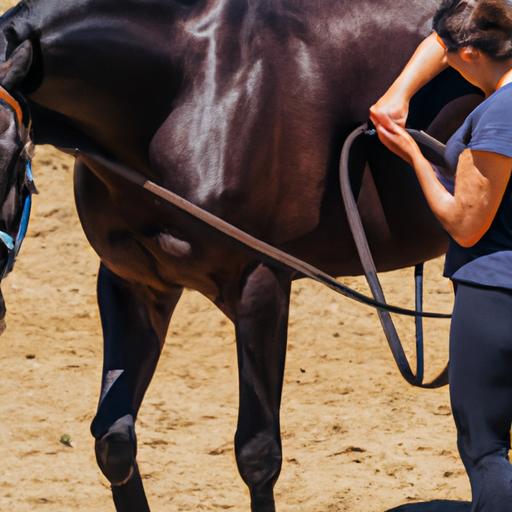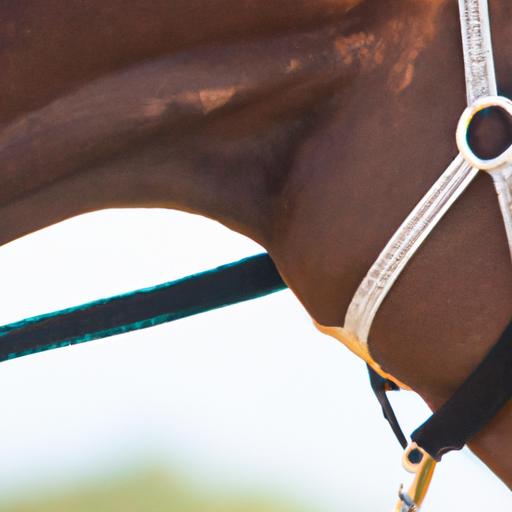Unlock your horse’s potential with a training halter for horses. Enhance control, communication, and correct behavior with effective training techniques.
As an equestrian enthusiast, you understand the importance of building a strong foundation when it comes to horse training. One essential tool that can make a significant impact on your horse’s progress is a training halter. In this article, we will delve into the world of training halters for horses and explore the remarkable benefits they offer.
Introduction

A. Importance of training halters for horses
Imagine trying to communicate with someone who doesn’t understand your language. Frustrating, isn’t it? Similarly, without proper communication, your horse may struggle to comprehend your cues and commands. This is where training halters come to the rescue. These specialized halters are designed to provide enhanced control and communication during training sessions, enabling you to establish a deeper connection with your equine companion.
B. Brief overview of the benefits of using a training halter
Training halters offer a plethora of advantages that can transform your horse’s training experience. By promoting proper head carriage and posture, they encourage your horse to develop a graceful and balanced stance. Additionally, training halters facilitate easier leading and ground work, enabling you to teach your horse essential skills such as backing up, yielding, and lunging.
But the benefits don’t stop there. Training halters also play a crucial role in correcting behavioral issues, helping you address common challenges such as pulling, rearing, or resisting pressure. Moreover, these halters promote better responsiveness to cues and commands, allowing you to refine your horse’s training and performance.
By incorporating a training halter into your horse training routine, you can unlock your horse’s full potential and achieve remarkable results. In the following sections, we will dive deeper into understanding training halters, choosing the right one, and exploring effective training techniques to maximize their benefits.
So, are you ready to embark on this journey of discovery with me? Let’s delve into the world of training halters and witness the incredible transformation they can bring to your horse training endeavors.
Understanding Training Halters
When it comes to training halters, it’s crucial to have a solid understanding of their definition, purpose, and how they differ from regular halters. Let’s delve into these aspects to gain a comprehensive understanding.
A. Definition and purpose of training halters
A training halter, also known as a lunging halter or a ground training halter, is specifically designed to aid in the training process by providing additional control and communication between the handler and the horse. Unlike traditional halters used for regular handling or turnout, training halters incorporate unique features that allow for more precise guidance and direction.
The primary purpose of a training halter is to establish clear cues and boundaries during training sessions. By applying pressure and release techniques, these halters help reinforce desired behaviors and discourage unwanted behaviors. Whether you’re working on ground manners, lunging, or teaching your horse specific maneuvers, a training halter becomes an invaluable tool in building a solid foundation.
B. Different types of training halters available
Training halters come in various designs, each catering to different training needs and preferences. Some common types include rope halters, flat webbing halters, and hybrid halters. Rope halters, made from sturdy yet soft materials, offer excellent communication and sensitivity. Flat webbing halters, on the other hand, provide a more traditional look while still maintaining functionality. Hybrid halters combine elements of both rope and webbing halters, offering the best of both worlds.
When selecting a training halter, consider factors such as material quality, adjustability, and durability. It’s essential to choose a halter that fits your horse comfortably and allows for proper communication without causing discomfort or restriction.
C. How training halters differ from regular halters
It’s essential to understand the key distinctions between training halters and regular halters. While regular halters are primarily used for leading, turnout, or tying purposes, training halters are specifically designed to facilitate communication, control, and guidance during training sessions. Training halters often feature additional knots, rings, or loops strategically placed to provide more control and leverage.
Unlike regular halters, training halters are designed to exert pressure on specific points of the horse’s head and face, encouraging the horse to respond to cues and commands. This pressure and release mechanism aids in teaching your horse to yield to pressure and follow your guidance effectively.
In the next section, we will explore the incredible benefits that training halters offer, ranging from enhanced control and posture to addressing behavioral issues. So, let’s dive deeper into the world of training halters and discover how they can revolutionize your horse training journey.
Benefits of Training Halters
When it comes to horse training, the benefits of using a training halter are truly unparalleled. Let’s explore the various advantages that these specialized halters offer:
A. Enhanced control and communication during training
Training halters provide you with a higher level of control and communication with your horse. With their unique design and strategic pressure points, these halters allow you to convey your commands more effectively. You’ll experience a newfound sense of connection and understanding as your horse responds to your cues with increased precision.
B. Encourages proper head carriage and posture
One of the key benefits of using a training halter is its ability to encourage proper head carriage and posture in your horse. These halters are designed to apply gentle pressure on specific areas of the horse’s face and poll, promoting proper alignment and balance. As a result, your horse will develop a more elegant and collected stance, enhancing their overall appearance and performance.
C. Facilitates easier leading and ground work
Training halters make leading and ground work exercises significantly easier. The design of these halters allows for better control and guidance, making it simpler to teach your horse essential skills such as walking, trotting, and halting. Whether you’re training a young horse or working on refining the skills of a seasoned equine partner, a training halter will prove invaluable in your groundwork sessions.
D. Helps in correcting behavioral issues
Behavioral issues can hinder your horse’s progress and create challenges during training. Fortunately, training halters can assist in addressing and correcting these issues. By utilizing the pressure points and leverage provided by the halter, you can effectively discourage undesirable behaviors such as pulling, rearing, or resisting pressure. With consistent use and appropriate training techniques, you’ll witness remarkable improvements in your horse’s behavior.
E. Promotes better responsiveness to cues and commands
Training halters play a crucial role in enhancing your horse’s responsiveness to cues and commands. The clear and concise signals conveyed through the halter allow your horse to understand and interpret your instructions more accurately. This improved responsiveness enables you to fine-tune your training and achieve greater precision in your horse’s movements and transitions.
With these remarkable benefits, it’s clear why training halters are a must-have tool for any dedicated horse trainer. In the next section, we will explore the key factors to consider when choosing the right training halter for your equine partner.
Choosing the Right Training Halter
When it comes to selecting a training halter for your horse, you want to ensure you make an informed decision. Not all halters are created equal, and choosing the right one can significantly impact the effectiveness of your training sessions. Let’s explore some key considerations and factors to evaluate when purchasing a training halter.
A. Considerations for selecting a training halter
-
Training Goals: Before making a purchase, consider your specific training goals. Are you focusing on groundwork, behavior correction, or performance enhancement? Different training halters may cater to specific objectives, so aligning your goals with the right halter is crucial.
-
Comfort and Fit: Your horse’s comfort is paramount. Look for a training halter that is adjustable and provides a snug fit without causing discomfort or rubbing. A well-fitting halter will ensure your horse can focus on the training without unnecessary distractions.
B. Factors to evaluate when purchasing a training halter
-
Durability: Training sessions can be rigorous, so opt for a halter made from durable materials such as high-quality nylon or leather. This will ensure your halter withstands the test of time and remains functional even during intense training sessions.
-
Hardware and Adjustability: Pay attention to the hardware, such as buckles and rings, ensuring they are sturdy and well-constructed. Additionally, choose a halter with adjustable features that allow for a customized fit and ease of use.
C. Understanding different materials and designs available
-
Nylon Halters: Nylon halters are a popular choice due to their affordability, durability, and easy maintenance. They come in various colors and designs, allowing you to express your style while training your horse.
-
Leather Halters: If you prefer a classic and timeless look, leather halters are an excellent option. Though they may require more maintenance, leather halters offer durability and a touch of elegance.
Remember, choosing the right training halter is essential for a successful training journey. Take your time to assess your training goals, prioritize comfort and fit, evaluate durability and adjustability factors, and explore the various materials and designs available. With the perfect training halter in hand, you’ll be ready to embark on a transformative training experience with your equine companion.


